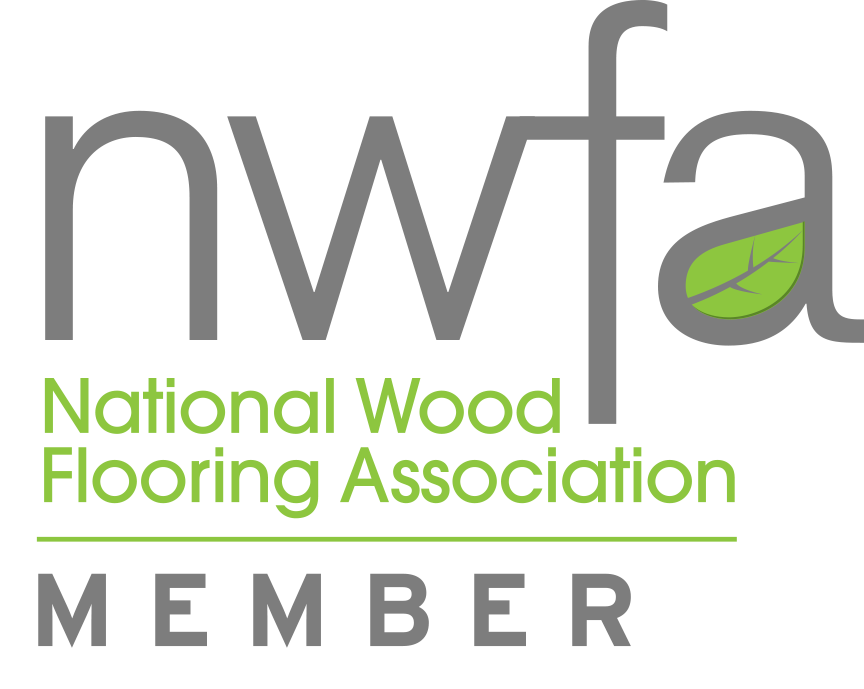
APPEARANCE AND PHYSICAL PROPERTIES
Padauk is harvested in forests in the central region of Cameroon. The tree reaches a maximum height of 40 m and achieves a trunk diameter of up to 1.1 m. The trunk is straight and cylindrical and has root flares.
Freshly sawn padauk has an attractive coral red colour. The grain is straight, but is sometimes interlocked. Exposure to light rapidly discolours the heartwood, which takes on a black brown colour. The wood has a medium coarse to coarse texture. Padauk is easy to machine. Pre-drilling is necessary; surface treatment is difficult due to the presence of resin in this wood. Padauk does not take long to dry. Generally, there is a possibility of fine cracks.
Padauk is preferably used for manufacturing interior and exterior façades as well as door and window frames. This high-quality wood is also suitable for manufacturing furniture, stairs and parquet floors.

APPEARANCE AND PHYSICAL PROPERTIES
Movingui is harvested in forests in the central region of Cameroon. The tree reaches a height of up to 50 m and has a maximum trunk diameter of 1.4 m. The trunk is straight and cylindrical.
Its light yellow to yellow brown colour is regarded as the distinctive feature of movingui. The trunks frequently exhibit figured grain patterns and occasionally contain a yellowish dye, which can rub off in wet conditions. The grain is often irregular, and the texture is fine to medium coarse. Movingui is relatively easy to machine. Nevertheless, the wood can often produce blunting effects which is why it is advisable to use carbide tools when working this wood. Pre-drilling for screws is recommended. Movingui dries slowly, and there is a low risk of cracking and deformation.
Because of its favourable physical properties, movingui can be used for many purposes, e.g. for façades, horticulture, door and window frames, furniture, flooring and parquet floors.

APPEARANCE AND PHYSICAL PROPERTIES
okoume is the commercial name for the botanical species Aucoumea klaineana. which comes from the tropical forests of Central Africa (primarily Gabon).
APPLICATION AREAS: Veneer, plywood, boatbuilding, musical instruments, furniture, and interior millwork.

APPEARANCE AND PHYSICAL PROPERTIES
Cumaru, also known as Brazilian teak, is a dense and durable hardwood native to South America. It is characterized by its golden to reddish-brown tones, often with subtle grain patterns and occasional interlocking. Renowned for its exceptional hardness and resistance to decay, insects, and wear, it is well-suited for demanding applications. While its density can make machining challenging, Cumaru finishes beautifully with proper preparation.
APPLICATION AREAS: Commonly used for decking, flooring, outdoor furniture, and heavy construction, it is valued for its strength, stability, and longevity in both indoor and outdoor projects.

APPEARANCE AND PHYSICAL PROPERTIES
Ipé is the commercial name for the botanical species Tabebuia spp. which belongs to the Bignoniaceae family and comes from the tropical forests of South and Central America.
APPLICATION AREAS.
-exterior constructions;
-cladding;
-garden furniture ;
-garden wood;
-exterior stairs;
-terraces (around swimming pools);
-various interior fittings such as parquet, flooring and stairs;
-furniture ;
-turning and sculpture.

APPEARANCE AND PHYSICAL PROPERTIES
Western red cedar grows in the Pacific northwest and along the Pacific Coast to Alaska. It is also called canoe cedar, giant arborvitae, shinglewood and Pacific red cedar. Heartwood reddish to pinkish brown, often with random streaks and bands of darker red/brown areas. Narrow sapwood is pale yellowish white, and isn’t always sharply demarcated from the heartwood.
APPLICATION AREAS:
Shingles, exterior siding and lumber, boatbuilding, boxes, crates, and musical instruments.
Padauk is harvested in forests in the central region of Cameroon. The tree reaches a maximum height of 40 m and achieves a trunk diameter of up to 1.1 m. The trunk is straight and cylindrical and has root flares.
Freshly sawn padauk has an attractive coral red colour. The grain is straight, but is sometimes interlocked. Exposure to light rapidly discolours the heartwood, which takes on a black brown colour. The wood has a medium coarse to coarse texture. Padauk is easy to machine. Pre-drilling is necessary; surface treatment is difficult due to the presence of resin in this wood. Padauk does not take long to dry. Generally, there is a possibility of fine cracks.
APPLICATION AREAS.
Padauk is preferably used for manufacturing interior and exterior façades as well as door and window frames. This high-quality wood is also suitable for manufacturing furniture, stairs and parquet floors.

APPEARANCE AND PHYSICAL PROPERTIES
Sapele is one of the most valuable wood species and is harvested in forests in the eastern and southern regions of Cameroon. Sapele trees can grow as tall as 50 m and have a trunk diameter of up to 1.3 m. One special feature of sapele is that its trunk grows very straight and cylindrical.
Sapele heartwood takes on a deep, red brown colour when exposed to light. The grain is straight to irregular. Sapele is easy to work and has a medium coarse texture. Good surface treatment is nevertheless possible under certain conditions. Cracking can occur during the sapele drying process.
Sapele is ideal for the production of door and window frames. Sapele is also widely used to manufacture and produce furniture, stairs, parquet floors and façades.

APPEARANCE AND PHYSICAL PROPERTIES
Ayous or Obeche is harvested in forests in the central and Eastern Regions of Cameroon. it is creamy-white to pale-straw in colour with no clear distinction between sapwood and heartwood, though the wide sapwood is more susceptible to discoloration and insect attack. It is the lightest low-cost utility hardwood in general use, the density being about 0,38 seasoned. The grain is slightly interlocked; the texture open. When cut on the quarter and stained it has some resemblance to African mahogany. Large logs commonly contain brittleheart. The wood has a ribbon-like aspect on quarter-sawn faces, and is lustrous. Fresh wood has an unpleasant smell, which disappears upon drying.
APPLICATION AREAS.
This type of wood is particularly recommended for Moulding, interior ,plywood Veneer for back or face of plywood and more


Follow us